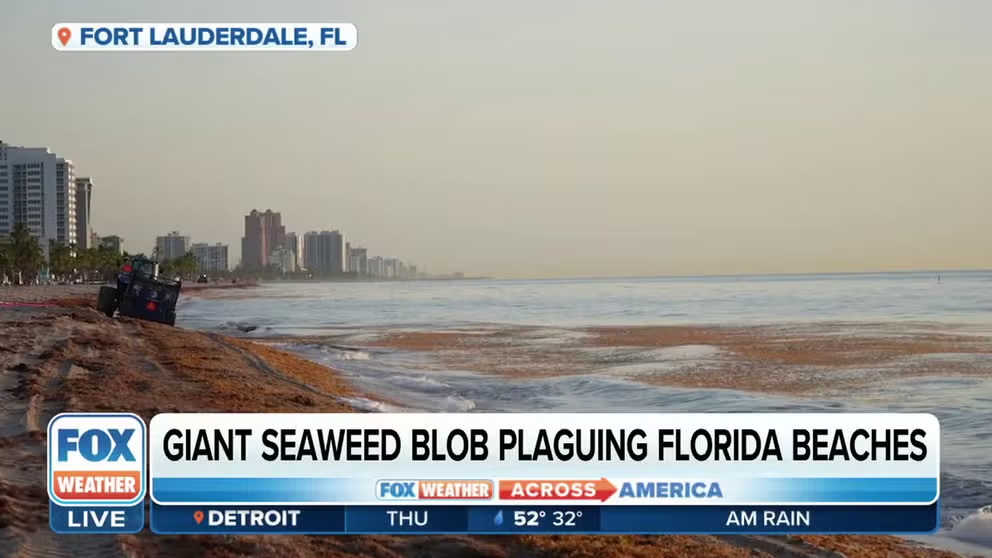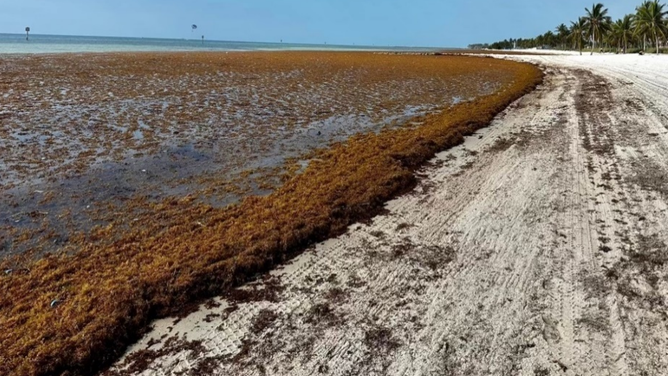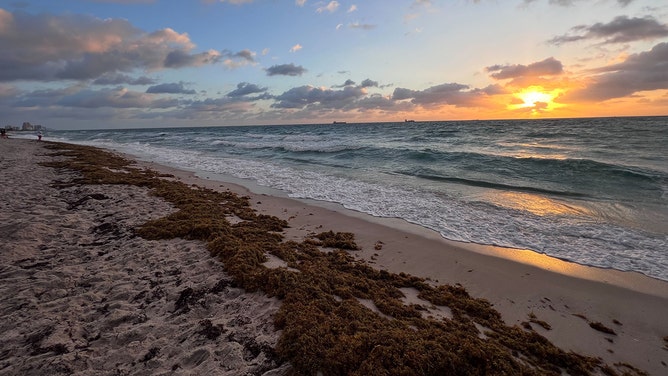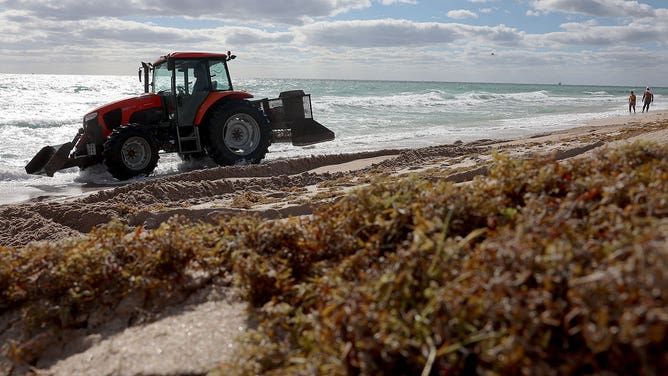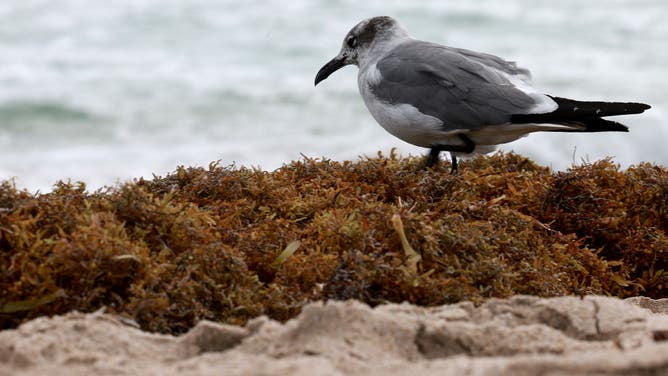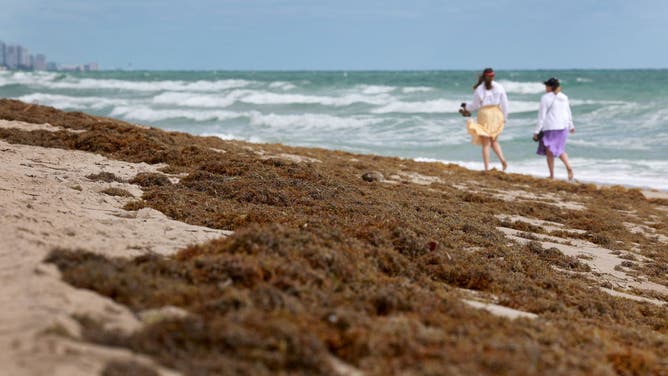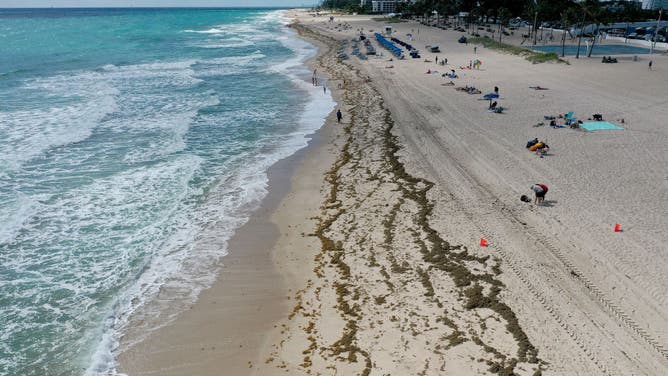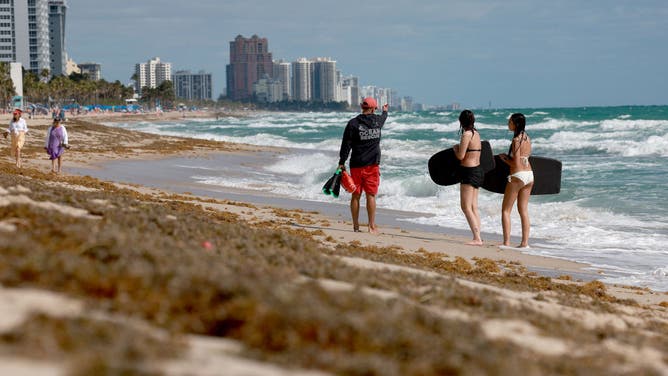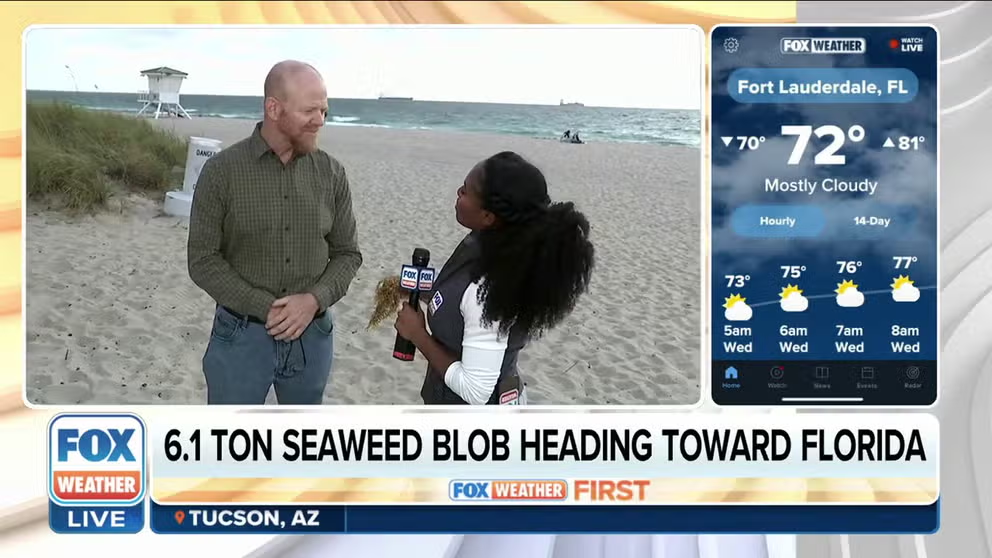Florida Keys cautiously watch visitor sentiment for impacts of incoming seaweed
Florida residents say the smelly seaweed has become more abundant over time, and significant events have occurred in 2014, 2015, 2018 and 2019. The events sometime occur during the busy spring break and summer seasons.
Giant blobs of seaweed an impact on Florida's beaches
Sargassum seaweed lines the shores of Fort Lauderdale, Florida. FOX Weather multimedia journalist Brandy Campbell on how the seaweed bloom threatens wildlife and beach goers.
KEY WEST, Fla. - The arrival of brown seaweed on beaches in South Florida is being kept in check for now, but a 5,000-mile stretch of the slimy flotilla has some communities gearing up for what could be a long season of clumps washing ashore.
Key West sits close to the Gulf Stream, where the sargassum tends to be thicker in the offshore currents.
Due to the occasional onshore flow, patches tend to make their way to the coast and can lead to some unpleasant days on the beach where visitors have to walk through seaweed and occasionally get a whiff of a smell described as resembling rotten eggs.
MASSIVE SEAWEED BLOOM STARTS WASHING ASHORE ON FLORIDA BEACHES
Large events in 2014, 2015, 2018 and 2019 have led to many Florida communities developing seaweed removal plans that help limit exposure to the gradually increasing problem.
"The city contracts with a company, and every morning they remove seaweed because there’s always some that washes up. So, they’re prepared for a heavier load of it- when and if it hits our shores," said Alyson Crean, a spokesperson for the city of Key West.
Local resorts and hotels also hire contractors to remove the seaweed, and efforts are said to quickly scale up when significant events are spotted.
According to Monroe County, the hotels and attractions that make up the tourism industry result in an economic impact of $2 billion for the islands, and any threat that is either natural or manmade can lead to devastating consequences.
An analysis conducted for the Florida Keys pegged a significant sargassum event at having a $20 million economic impact and some 300 lost jobs.
What concerns local leaders is not the seaweed itself but if the public’s perception becomes misaligned with reality.
Brown algae is largely not harmful to human health but is generally unattractive, which can weigh into a tourist’s planning.
The analysis for Monroe County found that one out of ten visitors would likely cancel their trip to the Keys or reschedule due to the presence of sargassum without even stepping foot at the southernmost point in the continental U.S.
"My city management is not worried about it, and our chamber is not worried. We think we’ve got seaweed under control," said Crean.
PLAGUE OF MASSIVE SEAWEED BLOBS FORCE DAILY CLEANING OF FLORIDA BEACHES DURING SPRING BREAK
A concern shared across the islands is the threat that removal operations have on the sea turtle nesting season.
The sea turtle season and the peak of sargassum tend to coincide, which forces environmental groups and removal crews to work hand-in-hand to prevent impacts on nests and newborns.
"We have volunteers walk the beach every morning during turtle season before the equipment gets on the beach and make sure that there have been no turtle crawls. And if there is a nest, they might get off, and the contractors avoid those areas. So we’re very careful not to harm the turtle," said Crean.
The sargassum season tends to decline during the late fall but is subject to extreme weather events, such as hurricanes, that can produce additional problems for coastal communities.
Florida beaches cleaning up massive seaweed bloom daily
Parts of Florida are bracing for a 6.1 ton belt that includes several blobs of seaweed that smells like rotten eggs to wash into the area as it makes its way across the Atlantic. FOX Weather's Brandy Campbell reports from Fort Lauderdale, Florida.
